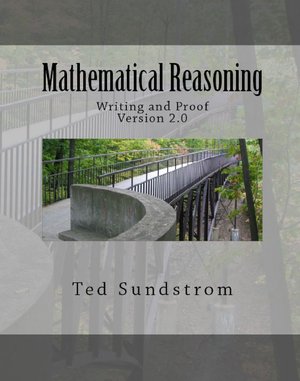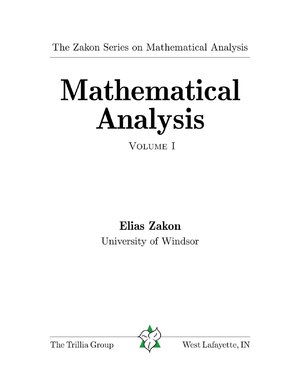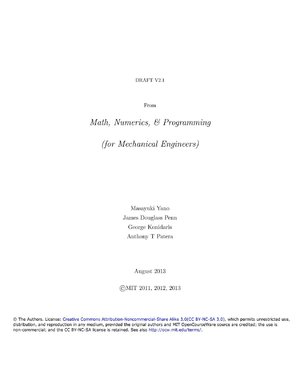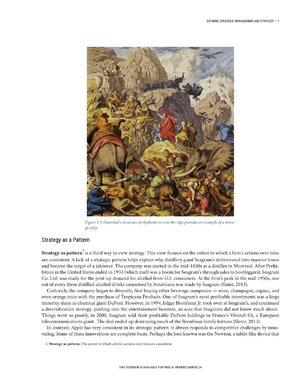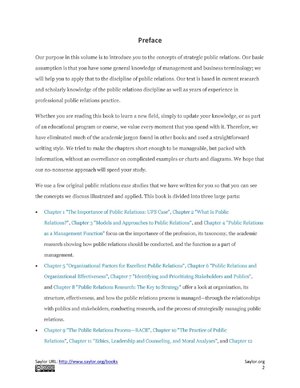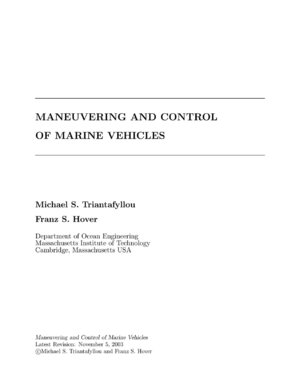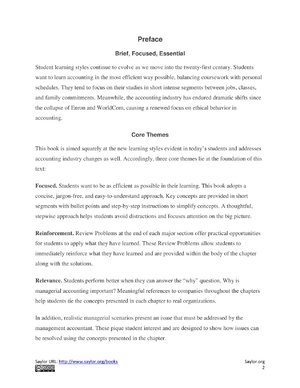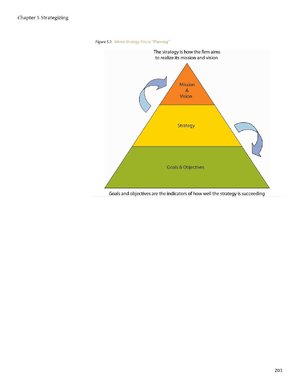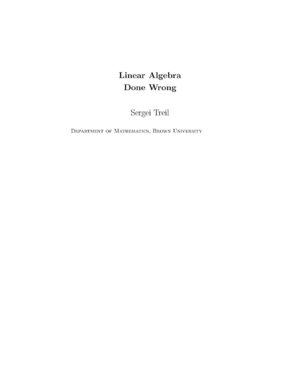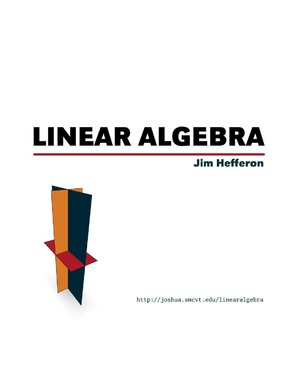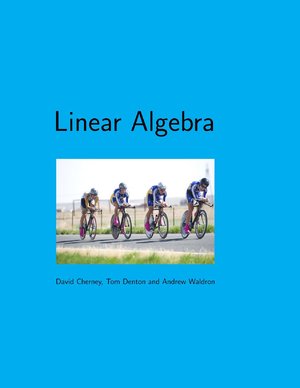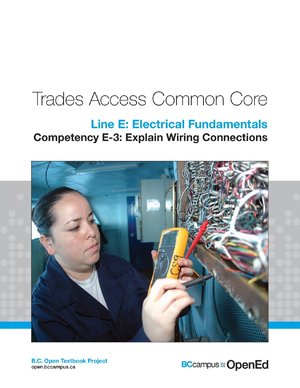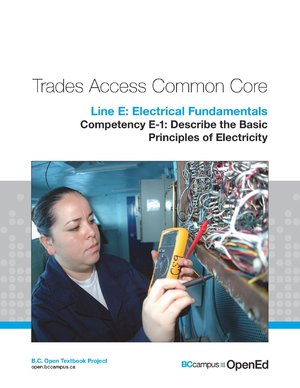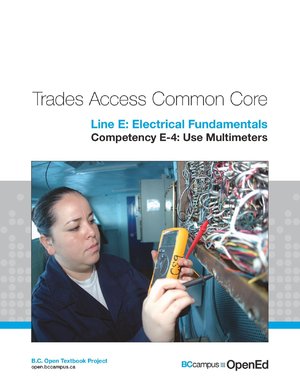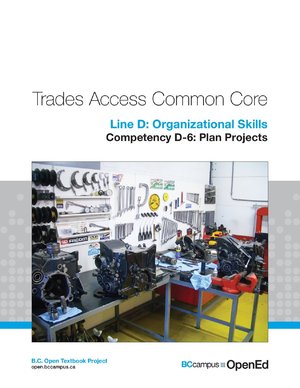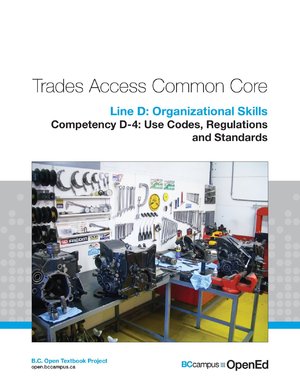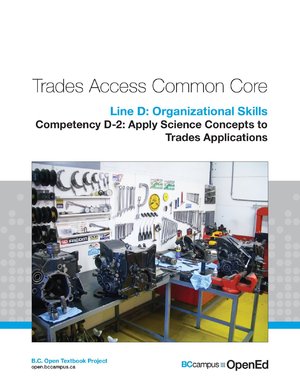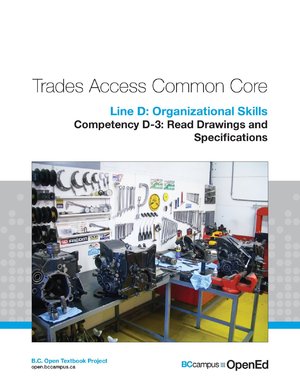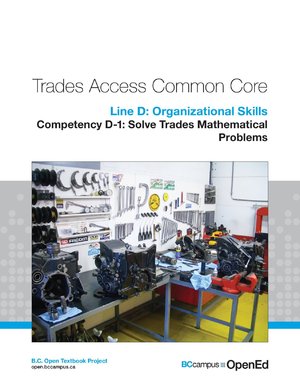How bad is the Ukraine war for the European recovery?
“Before the war, the European economy was experiencing a heady recovery. The one-two punch of higher energy prices and trade disruptions, however, could destabilise EU firms already weakened by the pandemic, according to a new report published by the European Investment Bank. Simulations by the European Investment Bank find that the share of EU firms losing in money could rise, particularly among businesses hit by lower exports to Ukraine, Russia and Belarus and those exposed to higher energy prices. At the same time, rising inflation could push more Europeans under the poverty line.”
Mathematical Reasoning: Writing and Proof, Version 2.0
Mathematical Reasoning: Writing and Proof is designed to be a text for the first course in the college mathematics curriculum that introduces students to the processes of constructing and writing proofs and focuses on the formal development of mathematics.The primary goals of the text are to help students:Develop logical thinking skills and to develop the ability to think more abstractly in a proof oriented setting.Develop the ability to construct and write mathematical proofs using standard methods of mathematical proof including direct proofs, proof by contradiction, mathematical induction, case analysis and counterexamples.Develop the ability to read and understand written mathematical proofs.Develop talents for creative thinking and problem solving.Improve their quality of communication in mathematics. This includes improving writing techniques, reading comprehension and oral communication in mathematics.Better understand the nature of mathematics and its language.This text also provides students with material that will be needed for their further study of mathematics.
Mathematical Analysis, Volume 1: The Zakon Series on Mathematical Analysis
This text grew out of the lecture notes from the author at the University of Windsor and was originally copyrighted in 1975. It is now published by the Trillia Group, a publishing company started by his son-in-law, Bradley Lucier, a professor of mathematics and computer science at Purdue. The level of the book is appropriate for a rigorous analysis course. The author writes in the introduction that “we try to simplify the modern Bourbaki approach to make it accessible to sufficiently advanced undergraduates.” The chapter titles are:Set TheoryReal Numbers. FieldsVector Spaces. Metric SpacesFunction Limits and ContinuityDifferentiation and Antidifferentiation
Math, Numerics and Programming: For Mechanical Engineers
This class introduces elementary programming concepts including variable types, data structures and flow control. After an introduction to linear algebra and probability, it covers numerical methods relevant to mechanical engineering, including approximation (interpolation, least squares and statistical regression), integration, solution of linear and nonlinear equations, ordinary differential equations and deterministic and probabilistic approaches. Examples are drawn from mechanical engineering disciplines, in particular from robotics, dynamics and structural analysis.
Math in Society
In this textbook there are fourteen chapters that are mostly indpendent of each other. For a typical semester course the instructor can choose several of the sections but would not be able to cover all of them. The text is full of exercises and activities to keep the students actively engaged. Each chapter has a number of short videos to emphasize the key ideas or show how to solve examples.
Mastering Strategic Management: Evaluation and Execution, First Canadian Edition
Mastering Strategic Management is designed to enhance student engagement in three innovative ways. The first is through visual adaptations of the key content in the book. It is well documented that many of today’s students are visual learners. To meet students’ wants and needs (and thereby create a much better teaching experience for professors), Mastering Strategic Management contains multiple graphic concept pages in ever section of every chapter of the book. Think of graphic concept pages as almost like info-graphics for key concepts in each section. This feature sets Mastering Strategic Management apart from any strategic management book on the market today. The second way the authors capture student interest through their textbook is by using a real-world company as the running example in each chapter. For example, Chapter 1 in Mastering Strategic Management utilizes Blackberry to harness the conceptual coverage of the chapter in a running, corporate, application to which students will relate. The third inventive way Mastering Strategic Management holds the attention of strategic management students is through the “strategy at the movies” feature in each chapter that links course concepts with a popular motion picture. The first Canadian Edition is an adaptation of Mastering Strategic Management. Adaptations include Canadian specific content, images and references, removal of copyright images, and inclusion of ancillary resources in the Appendix (Chapter PowerPoints).
Mastering Public Relations
Our purpose in this volume is to introduce you to the concepts of strategic public relations. Our basicassumption is that you have some general knowledge of management and business terminology; wewill help you to apply that to the discipline of public relations. Our text is based in current researchand scholarly knowledge of the public relations discipline as well as years of experience inprofessional public relations practice.Whether you are reading this book to learn a new field, simply to update your knowledge, or as partof an educational program or course, we value every moment that you spend with it. Therefore, wehave eliminated much of the academic jargon found in other books and used a straightforwardwriting style. We tried to make the chapters short enough to be manageable, but packed withinformation, without an overreliance on complicated examples or charts and diagrams. We hope thatour no-nonsense approach will speed your study.
Maneuvering and Control of Marine Vehicles
This course is about maneuvering motions of surface and underwater vehicles. Topics covered include: derivation of equations of motion, hydrodynamic coefficients, memory effects, linear and nonlinear forms of the equations of motion, control surfaces modeling and design, engine, propulsor and transmission systems modeling and simulation during maneuvering. The course also deals with stability of motion, principles of multivariable automatic control, optimal control, Kalman filtering and loop transfer recovery. We will also explore applications chosen from autopilots for surface vehicles; towing in open seas; and remotely operated vehicles.
Managerial Accounting
Kurt Heisinger and Joe Ben Hoyle believe that students want to learn accounting in the most efficient way possible, balancing coursework with personal schedules. They tend to focus on their studies in short intense segments between jobs, classes and family commitments. Meanwhile, the accounting industry has endured dramatic shifts since the collapse of Enron and WorldCom, causing a renewed focus on ethical behavior in accounting. This dynamic author team designed Managerial Accounting to work within the confines of today’s students’ lives while delivering a modern look at managerial accounting. Managerial Accounting was written around three major themes: Ready, Reinforcement and Relevance. This book is aimed squarely at the new learning styles evident with today’s students and addresses accounting industry changes as well. Ready. Your students want to be as efficient as possible in their learning. This book adopts a concise, jargon-free and easy-to-understand approach that is ready with concise sections and concepts when the student is ready to study in a format the student wants. Key concepts are provided in short segments with bullet points and step-by-step instructions to simplify concepts. This thoughtful, step-wise approach will help your students avoid distractions and focuses attention on the big picture. Reinforcement. Managerial Accounting boasts “Review Problems” at the end of each major section or learning objective which offer practical opportunities for students to apply what they have learned. These “Review Problems” allow students to immediately reinforce what they have learned and are provided within the body of the chapter along with the solutions. Relevance. Why is managerial accounting important? Since all students perform better when they can answer the “why” question, meaningful references to companies throughout the chapters help students tie the concepts presented in each chapter to real organizations. In addition, realistic managerial scenarios present an issue that must be addressed by the management accountant. These will pique your students’ interest and were designed to show how issues can be resolved using the concepts presented in the chapter. Finally, “Business in Action” features in Managerial Accounting link managerial decision-making to real business decisions to help your students complete the learning cycle from concept, to accounting decision, to real-world application. Managerial Accounting by Heisinger and Hoyle also contains a handful of other pedagogical aids to compliment your lectures and help your students come to class prepared. From a focus on decision-making, to end of chapter materials that can only be characterized as very deep and very wide, to ethics coverage, group projects and spreadsheet applications—these features allow you to teach the course you want to teach and assign the materials you like to assign.
Management Principles V. 1.1
This book is part of a small project by Andy Schmitz to archive copies of all the books which were made available online from a specific publisher at the end of 2012 in order to preserve their status as Creative Commons-licensed textbooks and therefore remain free to access and use. Schmitz explains why there are no authors, publisher names or descriptions: The books are licensed under the Creative Commons by-nc-sa 3.0 license, which typically requires attributing the source of the work (author, title, and URI). Initially, then, these books were attributed to the authors and publisher who made them available. However, in March 2013, I was contacted by the publisher, who, acting as the licensor of the works, asked me to remove the Creative Commons attribution to the original authors and publisher from the collection of books. They also indicated that, in situations where I was required to attribute the work, they wished the works to be attributed to anonymous authors. While I find this turn of events disappointing because it doesn’t give the publisher or the original authors very much credit for for making the books available, I have obliged by removing the original attribution I had added for Creative Commons, and by not specifying the publisher’s name in my templates for the books.What about the titles? In August 2013, I was contacted again by the publisher, who requested that I remove the books’ original titles as well. Under the understanding that the books republished here are a Collection, and that the title in the book URIs could be considered part of the Section 4(d) attribution, I have retitled all of the books hosted in this collection. Care has been taken to ensure that links to the old names in this collection will redirect to the book’s new location, and to the same content. Further, the publisher requested that I remove their “corporate trademarks” from the books. I have therefore also replaced the publisher’s name with the phrase “Unnamed Publisher” and a link to this page.And the citations? A number of the books in this archive had citations to other books from the publisher, or other resources that the publisher was hosting. As part of the publisher’s requests, they asked to have these citations and links removed as well. Because it did not appear as though the removal of the citations was likely to impact the books’ usability, where I have found citations to books from the publisher, I have removed those citations as well.
Management Principles V. 1.0
This book is part of a small project by Andy Schmitz to archive copies of all the books which were made available online from a specific publisher at the end of 2012 in order to preserve their status as Creative Commons-licensed textbooks and therefore remain free to access and use. Schmitz explains why there are no authors, publisher names or descriptions: The books are licensed under the Creative Commons by-nc-sa 3.0 license, which typically requires attributing the source of the work (author, title, and URI). Initially, then, these books were attributed to the authors and publisher who made them available. However, in March 2013, I was contacted by the publisher, who, acting as the licensor of the works, asked me to remove the Creative Commons attribution to the original authors and publisher from the collection of books. They also indicated that, in situations where I was required to attribute the work, they wished the works to be attributed to anonymous authors. While I find this turn of events disappointing because it doesn’t give the publisher or the original authors very much credit for for making the books available, I have obliged by removing the original attribution I had added for Creative Commons, and by not specifying the publisher’s name in my templates for the books.What about the titles? In August 2013, I was contacted again by the publisher, who requested that I remove the books’ original titles as well. Under the understanding that the books republished here are a Collection, and that the title in the book URIs could be considered part of the Section 4(d) attribution, I have retitled all of the books hosted in this collection. Care has been taken to ensure that links to the old names in this collection will redirect to the book’s new location, and to the same content. Further, the publisher requested that I remove their “corporate trademarks” from the books. I have therefore also replaced the publisher’s name with the phrase “Unnamed Publisher” and a link to this page.And the citations? A number of the books in this archive had citations to other books from the publisher, or other resources that the publisher was hosting. As part of the publisher’s requests, they asked to have these citations and links removed as well. Because it did not appear as though the removal of the citations was likely to impact the books’ usability, where I have found citations to books from the publisher, I have removed those citations as well.
Financial Report 2022
In 2022, the Bank’s lending signatures amounted to €65.1 billion. This report includes the 2022 financial statements and audit reports both for the EIB and the EIB Group.
Macroeconomics: Theory Through Applications
The intended audience of the textbook is first-year undergraduates taking courses on the principles of macroeconomics and microeconomics. Many may never take another economics course. We aim to increase their economic literacy both by developing their aptitude for economic thinking and by presenting key insights about economics that every educated individual should know. We have written a fundamentally different text for principles of economics, based on two premises: Students are motivated to study economics if they see that it relates to their own lives, and students learn best from an inductive approach, in which they are first confronted with a question and then led through the process of how to answer that question.
Living With Earthquakes in the Pacific Northwest
In this expanded new edition of Living With Earthquakes, Robert Yeats, a leading authority on earthquakes in California and the Pacific Northwest, describes the threat posed by the Cascadia Subduction Zone, a great earthquake fault which runs for hundreds of miles offshore from British Columbia to northern California. New research reveals subtle movements on the deepest part of this fault every 14–15 months—building up strain toward the next major earthquake. Combining cutting-edge research with practical safety information, Living with Earthquakes: • Introduces new information about the danger from faults beneath major Northwest cities: the Seattle Fault, Tacoma Fault and Portland Hills Fault • Explores such topics as earthquake forecasting, catastrophe insurance, tsunamis, soil liquefaction and seismic waves in Northwest lakes caused by Alaskan earthquakes • Reviews earthquake preparedness and disaster response in the aftermath of the 2001 Nisqually earthquake, the worst natural disaster in Washington’s history • Suggests actions that citizens can take to protect their families and homes. An essential guide for anyone interested in understanding earthquake science or in preparing for the next earthquake, this book is also a call to action. Vivid descriptions of recent disaster—including the great tsunami that swept down the Northwest coast in 1964, the 1993 Oregon earthquakes, and the 2001 Nisqually earthquake—underscore the urgent need for better earthquake planning and awareness.
The Little Book of Semaphores: Version 2.2.1
The Little Book of Semaphores is a free (in both senses of the word) textbook that introduces the principles of synchronization for concurrent programming. In most computer science curricula, synchronization is a module in an Operating Systems class. OS textbooks present a standard set of problems with a standard set of solutions, but most students don’t get a good understanding of the material or the ability to solve similar problems. The approach of this book is to identify patterns that are useful for a variety of synchronization problems and then show how they can be assembled into solutions. After each problem, the book offers a hint before showing a solution, giving students a better chance of discovering solutions on their own. The book covers the classical problems, including “Readers-writers,” “Producer-consumer” and “Dining Philosophers.” In addition, it collects a number of not-so-classical problems, some written by the author and some by other teachers and textbook writers. Readers are invited to create and submit new problems.
Literature, the Humanities and Humanity
Literature, the Humanities and Humanity attempts to make the study of literature more than simply another school subject that students have to take. At a time when all subjects seem to be valued only for their testability, this book tries to show the value of reading and studying literature, even earlier literature. It shows students, some of whom will themselves become teachers, that literature actually has something to say to them. Furthermore, it shows that literature is meant to be enjoyed, that, as the Roman poet Horace (and his Renaissance disciple Sir Philip Sidney) said, the functions of literature are to teach and to delight. The book will also be useful to teachers who want to convey their passion for literature to their students. After an introductory chapter that offers advice on how to read (and teach) literature, the book consists of a series of chapters that examine individual literary works ranging from The Iliad to Charles Dickens’ Bleak House. These chapters can not substitute for reading the actual works. Rather they are intended to help students read those works. They are attempts to demystify the act of reading and to show that these works, whether they are nearly three thousand or less than 200 years old, still have important things to say to contemporary readers.
Linear Algebra, Theory and Applications
This is a book on linear algebra and matrix theory. While it is self contained, it will work best for those who have already had some exposure to linear algebra. It is also assumed that the reader has had calculus. Some optional topics require more analysis than this, however.This book features an ugly, elementary and complete treatment of determinants early in the book. Thus it might be considered as Linear algebra done wrong. I have done this because of the usefulness of determinants. However, all major topics are also presented in an alternative manner which is independent of determinants.The book has an introduction to various numerical methods used in linear algebra. This is done because of the interesting nature of these methods. The presentation here emphasizes the reasons why they work. It does not discuss many important numerical considerations necessary to use the methods effectively. These considerations are found in numerical analysis texts.
Linear Algebra Done Wrong
Brown University has two introductory linear algebra courses. This text is used in the honors course that emphasizes proofs. The book’s title suggests that it is not the typical approach to linear algebra even among those books that are more theoretical.For example, the concept of a basis is treated as more fundamental than the concept of linear independence, and linear transformations are introduced before solving systems of linear equations. Especially noteworthy is the motivation and development of determinants. As the author states in the preface:I spent a lot of time presenting a motivation for the determinant, and only much later give formal definitions. Determinants are introduced as a way to compute volumes. It is shown that if we allow signed volumes, make the determinant linear in each column… and assume some very natural properties, then we do not have any choice and arrive at the classical definition of the determinant.Table of ContentsBasic notionsSystems of linear equationsDeterminantsIntroduction to spectral theory (eigenvalues and eigenvectors)Inner product spacesStructure of operators in inner product spacesBilinear and quadratic formsDual spaces and tensorsAdvanced spectral theory
Linear Algebra
This book has the standard content of a course for science, math and engineering students that follows calculus. A semester of calculus is the explicit prerequisite, but most students would have three semesters of calculus and for them some of the beginning sections of the book can be skipped. Each chapter ends with three or four applications of that chapter’s subject.From the author’s description of the book:The approach is developmental. Although the presentation is focused on covering the requisite material by proving things, it does not start with an assumption that students are already able at abstract work. Instead, it proceeds with a great deal of motivation, many computational example, and exercises that range from routine verifications to (a few) challenges. The goal is, in the context of developing the usual material of an undergraduate linear algebra course, to help raise the level of mathematical maturity of the class.
Linear Algebra
We believe the entire book can be taught in 25 50-minute lectures to a sophomore audience that has been exposed to a one year calculus course. Vector calculus is useful, but not necessary preparation for this book, which attempts to be self-contained. Key concepts are presented multiple times, throughout the book, often first in a more intuitive setting, and then again in a definition, theorem, proof style later on. We do not aim for students to become agile mathematical proof writers, but we do expect them to be able to show and explain why key results hold. We also often use the review exercises to let students discover key results for themselves; before they are presented again in detail later in the book.The book has been written such that instructors can reorder the chapters (using the La- TeX source) in any (reasonable) order and still have a consistent text. We hammer the notions of abstract vectors and linear transformations hard and early, while at the same time giving students the basic matrix skills necessary to perform computations. Gaussian elimination is followed directly by an “exploration chapter” on the simplex algorithm to open students minds to problems beyond standard linear systems ones. Vectors in Rn and general vector spaces are presented back to back so that students are not stranded with the idea that vectors are just ordered lists of numbers. To this end, we also labor the notion of all functions from a set to the real numbers. In the same vein linear transformations and matrices are presented hand in hand. Once students see that a linear map is specified by its action on a limited set of inputs, they can already understand what a basis is. All the while students are studying linear systems and their solution sets, so after matrices determinants are introduced. This material can proceed rapidly since elementary matrices were already introduced with Gaussian elimination. Only then is a careful discussion of spans, linear independence and dimension given to ready students for a thorough treatment of eigenvectors and diagonalization. The dimension formula therefore appears quite late, since we prefer not to elevate rote computations of column and row spaces to a pedestal. The book ends with applications — least squares and singular values. These are a fun way to end any lecture course. It would also be quite easy to spend any extra time on systems of differential equations and simple Fourier transform problems.
Line E: Electrical Fundamentals: Competency E-3: Explain Wiring Connections
It is important for you to be familiar with techniques for soldering electrical connections and how to use wireless connectors. For example, the ends of the finely stranded wires used for power supply cords on most portable power tools are soldered to permit a long-lasting, troublefree connection. Solder also produces secure, durable electrical connections for switches, plugs, and tools. Wireless connectors are commonly used in many electrical applications because they are quick and easy to use.The following list of lines and competencies was generated with the goal of creating an entry-level trades training resource, while still offering the flexibility for lines to be used as stand-alone books. E-1 Describe the Basic Principles of Electricity, E-2 Identify Common Circuit Components and Their Symbols, E-3 Explain Wiring Connections, E-4 Use Multimeters. Special thanks to CAPER-BC (https://caperbc.ca/) for creating the audio recording for each Competency.
Line E: Electrical Fundamentals,: Competency E-1: Describe the Basic Principles of Electricity
You will use electricity daily. Vehicles and machinery are started and often operated by electricity. Electric tools make the performance of your job easier and more efficient. However, to use electricity safely and effectively, it is important to understand electricity’s terminology and principles.The following list of lines and competencies was generated with the goal of creating an entry-level trades training resource, while still offering the flexibility for lines to be used as stand-alone books. E-1 Describe the Basic Principles of Electricity, E-2 Identify Common Circuit Components and Their Symbols, E-3 Explain Wiring Connections, E-4 Use Multimeters. Special thanks to CAPER-BC (https://caperbc.ca/) for creating the audio recording for each Competency.
European Investment Advisory Hub Report 2021
“Funded and managed by the European Commission and the European Investment Bank, the European Investment Advisory Hub helps identify, prepare and implement sustainable investment projects across Europe. Since its launch, the European Investment Advisory Hub has received more than 2 500 direct requests for in-depth support. In 2021, less-developed, so-called cohesion countries submitted the greatest number of requests. The European Investment Advisory Hub’s main goal is to give promoters a comprehensive and bespoke advisory package, which includes information and guidance via our website, tailored assistance to develop and implement investment projects and platforms, and light advisory support when projects just need a little extra push to get up and running. As the 2021 report shows, the road to recovery is looking increasingly green and digital as the technological advances spurred on by the COVID-19 pandemic are harnessed and paired with climate-minded investments.”
Line E: Electrical Fundamentals: Competency E-4: Use Multimeters
Whether you choose to work in an electrical trade, a mechanical trade, or one of the construction trades, you will probably be faced with using and/or maintaining a variety of electrical measuring instruments. This Competency will introduce you to three basic meters for measuring voltage, current, and resistance. You must have a basic understanding of the purpose and operation of each type of meter before you attempt to use one. If you connect a meter incorrectly, you not only risk damaging the instrument, but more importantly, you or some innocent bystander could receive a serious electrical shock.The following list of lines and competencies was generated with the goal of creating an entry-level trades training resource, while still offering the flexibility for lines to be used as stand-alone books. E-1 Describe the Basic Principles of Electricity, E-2 Identify Common Circuit Components and Their Symbols, E-3 Explain Wiring Connections, E-4 Use Multimeters. Special thanks to CAPER-BC (https://caperbc.ca/) for creating the audio recording for each Competency.
Line D: Organizational Skills: Competency D-6: Plan Projects
Every job is different and may have special requirements. Anticipating these requirements and planning accordingly is vital to ensuring that you have the materials, tools and time to complete the job. To do this effectively you will need to have a clear understanding of the overall job. You will need to know what materials are required and be able to record organized and accurate notes on the time and materials used when the job is complete. Planning ahead saves time and money and makes a job more profitable. Effectively managing time and resources, including materials and keeping detailed notes is very important whether you are working for another company or on your own. It allows your company to be more competitive and also provides a good base for estimating the costs of similar jobs in the future. The following list of lines and competencies was generated with the goal of creating an entry-level trades training resource, while still offering the flexibility for lines to be used as stand-alone books. Line D – Organizational Skills. D-1 Solve Trades Mathematical Problems, D-2 Apply Science Concepts to Trades Applications, D-3 Read Drawings and Specifications, D-4 Use Codes, Regulations, and Standards, D-5 Use Manufacturer and Supplier Documentation, D-6 Plan Projects. Special thanks to CAPER-BC for creating the audio recording for each Competency.
Line D: Organizational Skills: Competency D-5: Use Manufacturer and Supplier Documentation
Document use is one of the nine essential skills identified by the Government of Canada to be successful in the workplace. It refers to the skills needed to find, enter and use letters, numbers, symbols and images in electronic and paper form. In the trades, people use document literacy skills to find and enter information in forms, lists, tables, graphs, maps and drawings. The following list of lines and competencies was generated with the goal of creating an entry-level trades training resource, while still offering the flexibility for lines to be used as stand-alone books. Line D – Organizational Skills. D-1 Solve Trades Mathematical Problems, D-2 Apply Science Concepts to Trades Applications, D-3 Read Drawings and Specifications, D-4 Use Codes, Regulations, and Standards, D-5 Use Manufacturer and Supplier Documentation, D-6 Plan Projects. Special thanks to CAPER-BC for creating the audio recording for each Competency.
Line D: Organizational Skills: Competency D-4: Use Codes, Regulations and Standards
Codes, regulations, standards, specifications and recommended practices are used in all aspects of construction, fabrication, manufacturing and inspection. The following list of lines and competencies was generated with the goal of creating an entry-level trades training resource, while still offering the flexibility for lines to be used as stand-alone books. Line D – Organizational Skills. D-1 Solve Trades Mathematical Problems, D-2 Apply Science Concepts to Trades Applications, D-3 Read Drawings and Specifications, D-4 Use Codes, Regulations, and Standards, D-5 Use Manufacturer and Supplier Documentation, D-6 Plan Projects. Special thanks to CAPER-BC for creating the audio recording for each Competency.
Line D: Organizational Skills: Competency D-2: Apply Science Concepts to Trades Applications
This Competency introduces the basic principles governing the structure and the behaviour of solids, liquids, and gases. You will look at the effects forces have on objects and the basic machines that transmit a force. You will also examine the effects of thermal and electrical energy. The following list of lines and competencies was generated with the goal of creating an entry-level trades training resource, while still offering the flexibility for lines to be used as stand-alone books. Line D – Organizational Skills. D-1 Solve Trades Mathematical Problems, D-2 Apply Science Concepts to Trades Applications, D-3 Read Drawings and Specifications, D-4 Use Codes, Regulations, and Standards, D-5 Use Manufacturer and Supplier Documentation, D-6 Plan Projects
Line D: Organizational Skills: Competency D-3: Read Drawings and Specifications
Some of the most important documents used in the workplace are the technical drawings, diagrams, and schematics that specify how fabrication and construction tasks will be carried out, or describe the composition and assembly of equipment. One of the essential skills for anyone involved in a trade is the ability to correctly interpret drawings. If you are in a construction or fabrication industry, you will need to be able to examine a drawing, take information from it, and visualize the finished product. If you are in a service or maintenance industry, you will need to interpret exploded drawings in order to properly repair or assemble equipment. The following list of lines and competencies was generated with the goal of creating an entry-level trades training resource, while still offering the flexibility for lines to be used as stand-alone books. Line D – Organizational Skills. D-1 Solve Trades Mathematical Problems, D-2 Apply Science Concepts to Trades Applications, D-3 Read Drawings and Specifications, D-4 Use Codes, Regulations, and Standards, D-5 Use Manufacturer and Supplier Documentation, D-6 Plan Projects. Special thanks to CAPER-BC (https://caperbc.ca/) for creating the audio recording for each Competency.
Line D: Organizational Skills: Competency D-1: Solve Trades Mathematical Problems
Essential skills are used in every job to varying degrees and at different levels of complexity. They provide the foundation for learning all other skills and enable people to evolve in their jobs and adapt to changes in the workplace. The following list of lines and competencies was generated with the goal of creating an entry-level trades training resource, while still offering the flexibility for lines to be used as stand-alone books. Line D — Organizational Skills. D-1 Solve Trades Mathematical Problems, D-2 Apply Science Concepts to Trades Applications, D-3 Read Drawings and Specifications, D-4 Use Codes, Regulations, and Standards, D-5 Use Manufacturer and Supplier Documentation, D-6 Plan Projects. Special thanks to CAPER-BC for creating the audio recording for each Competency.


